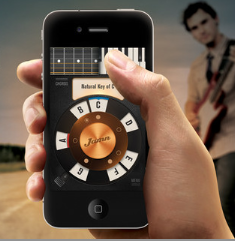by Mike Tuttle
Rapper Tupac Shakur was killed over fifteen years ago. But this past Sunday he performed on stage with Snoop Dogg. In what is viewed by some as the most unlikely “comeback concert” in history, and by others as a sad exploitation of a deceased man’s reputation and fan base, the Coachella Valley Music and Arts Festival stage played host to a performance by a “hologram” of Tupac.
Tupac’s hologram and Snoop Dogg did their collaboration “2 of Americaz Most Wanted” for the Coachella crowd and left a lot of people scratching their heads about how it all was pulled off. We recall that Black Eyed Peas member will.i.am was interviewed in “hologram” form on CNN in 2008. Are we headed into an era of “Help me Obi-Wan Kenobi; you’re my only hope”-style holograms?
There has been a lot of secrecy surrounding the technology and production behind the Tupac “appearance,” but we do know this much: the lifelike representation of Shakur was put together by Digital Domain, the same Hollywood special effects house that worked on “TRON: Legacy,” (putting a young Jeff Bridges into the movie), and worked magic on Brad Pitt for “The Curious Case of Benjamin Button.” The actual stage projection live was handled by AV Concepts of San Diego. However, the entire vision was Dr. Dre’s.
The will.i.am CNN “appearance” we mentioned earlier was one of two done by CNN that day about Obama’s victory in the general election that night. But after all was said and done, many came forward to protest calling those appearances “holograms.” It was revealed that the CNN stunts were not what they appeared to be at all.
Will.i.am did not actually appear in the studio with the interviewer. He was in another room at another location, much like any other remote interview is done on a news channel. But this room was special. It was a “green screen” that we are all very familiar with, but it surrounded him 360º. There were 35 high-definition cameras circling that “green room”, placed 6 inches apart, shooting him from all angles. Those images were composited and added to the in-studio images from CNNs newsroom the way green screen material usually is. Anderson Cooper was not seeing a projected “hologram.” He was, in fact, talking to empty space. Everything else was added in the control room.
Many said that CNN needed to stop calling these stunts “holograms”. They were neat, but they did not satisfy the definition of the term.
So, how did AV Concepts pull it off live in front of an audience? They technically didn’t use a hologram either, rather very old technology. The team used an old illusion trick called “Pepper’s Ghost,” named after John Henry Pepper, a lecturer in London in the mid-1800s. He used an old parlor trick involving two rooms and a reflective pane of glass that made “ghosts” appear on stage in theaters. It has since been used many times by museums and stage acts to make it appear that someone was on stage as a ghost or other figure.
AV Concepts’ use of this old technology, combined with the composite of Tupac put together by Digital Domain, could very well have made the physical appearance of Tupac work for a live audience.
But what about rapping live with Snoop? This is not an unusual scenario at all. It could have been accomplished in several ways…
1) Entirely taped, from an old Snoop/Tupac performance.
2) Half taped, half live, with Tupac’s lines being from an old recording or composite of old recordings to vary up the performance, with Snoop then rapping along with it.
3) Entirely taped anew with a sound-alike artist, then synced with Snoop onstage.
4) Some combination of the above.
Synchronizing between taped and live elements is very common nowadays. Most bands do this when the recorded version of songs they are doing live have too much material in it, such as multiple guitar parts, keyboard parts, background vocals, etc. The band simply uses a “click track” or metronome signal, to keep them in synch with the prerecorded track. The same method can be used to combine live performers with video elements or even performers in completely different locations, as long as there is no latency in the transfer.
So the technology behind the Tupac illusion performance is not all that surprising. Which leaves the bigger questions of: was it a good idea? Will we see more of this in the future, where dead performers are brought back to life? What about having living performers “duet” with younger versions of themselves? After what we saw with “Benjamin Button,” anything is possible. It will be interesting to see where this all goes. Who knows? Maybe we’ll get The Beatles back together next year…
Mike Tuttle is a freelance writer who digs on music, tech, and political topics that twitch his in-laws. Catch him on Google+ and Twitter at @MikeTuttle.

















[...] article was originally published under my byline at SoundCtrl. It remains their property and is presented here as a writing sample [...]